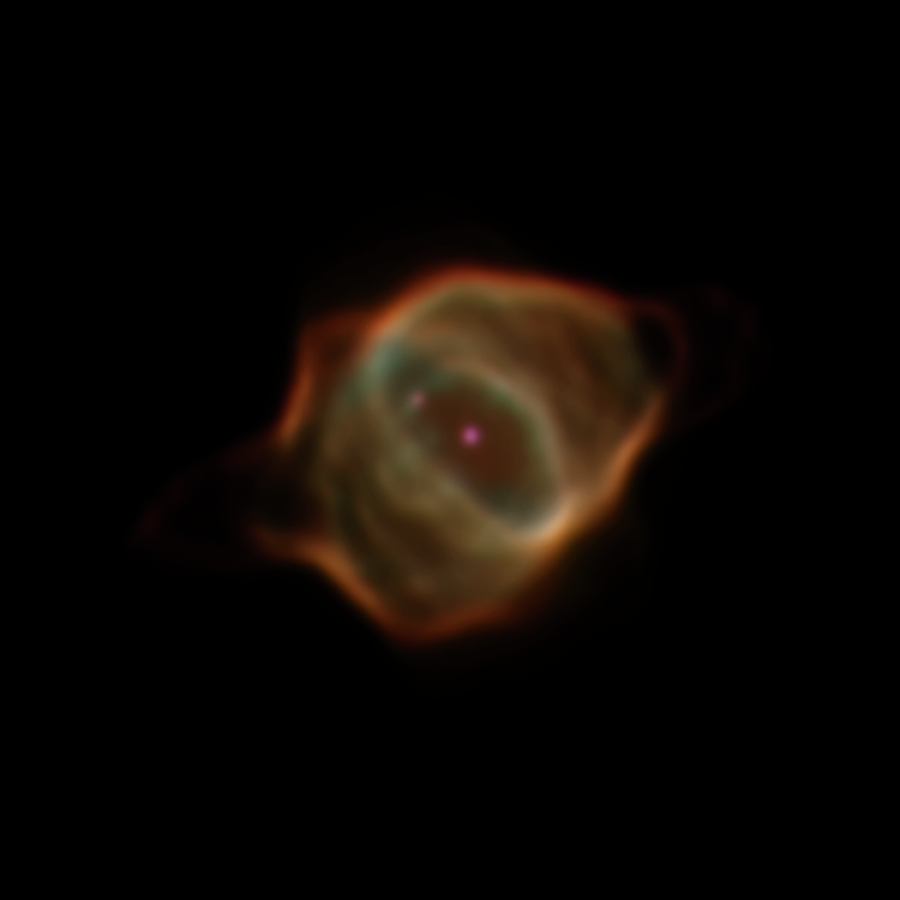The Stingray nebula is fading fast, Hubble telescope photos reveal
Photos from NASA's Hubble Space Telescope show the stunning Stingray nebula fading at an unprecedented rate.
The Stingray nebula, formally known as Hen 3-1357, is the youngest known planetary nebula in our sky. However, Hubble images taken 20 years apart show a dramatic change in the nebula's shape and brightness: Its once robust, bright blue clouds of interstellar dust and gas have nearly disappeared, according to a statement from NASA.
"This is very, very dramatic, and very weird," Martín A. Guerrero, an astronomer the Instituto de Astrofísica de Andalucía in Spain and team member on the ongoing analysis, said in the statement. "What we're witnessing is a nebula's evolution in real time. In a span of years, we see variations in the nebula. We have not seen that before with the clarity we get with this view."
Gallery: Strange nebula shapes, what do you see?
The recent study of the Stingray nebula compares Hubble images taken in 1996 and 2016. The earlier photos capture bright, blue, fluorescent hydrogen gas clouds toward the center of the nebula. But images taken in 2016 show that the gas has all but disappeared, causing the nebula to appear smaller and dimmer. The shells of gas have also lost their distinct, wavy edges that earned the nebula its aquatic namesake.
"Changes in nebulas have been seen before, but what we have here are changes in the fundamental structure of the nebula," Bruce Balick, lead researcher on the project and an astronomer at the University of Washington, Seattle, said in the statement.
The Stingray nebula is comprised of gas and dust expelled from its central star, known as SAO 244567. Generally, the star would continue to heat the material as it expands outward, causing the gas and dust to become ionized and glow.
Breaking space news, the latest updates on rocket launches, skywatching events and more!
However, data from the Hubble images revealed rapid changes in the light emitted by glowing nitrogen, hydrogen and oxygen shed by the dying star. Specifically, researchers found the oxygen emission from the star dropped in brightness by a factor of nearly 1,000 between 1996 and 2016, according to the statement.
"In most studies, the nebula usually gets bigger. Here, it's fundamentally changing its shape and getting fainter, and doing so on an unprecedented time scale," Balick said. "Moreover, to our surprise, it's not growing any larger. Indeed, the once-bright inner elliptical ring seems to be shrinking as it fades."
When Hubble first photographed the Stingray nebula in 1996, researchers believed the image represented the final stages of SAO 244567's life, as the ballooning cloud of bright gas was cast off by the dying star.
Now, however, it appears SAO 245567 is backstepping in its stellar evolution, as more recent observations show the Stingray nebula has faded significantly, and its brightest inner structure has contracted, instead of continually expanded. The rapid changes observed in the nebula's brightness and structure are believed to be triggered by the cooling of its central star. As the star cools, it gives off less ultraviolet ionizing radiation that would otherwise heat the expelled gas and make it glow.

A previous study, led by Nicole Reindl from the University of Potsdam, showed that the temperature of SAO 245567 increased from less than 40,000 to 108,000 degrees Fahrenheit between 1971 to 2002. This spike in temperature was likely caused by a brief burst of helium fusion at the star's core, which would help explain why the Stingray nebula appeared brighter in 1996, but has since quickly faded, according to the statement.
"We're very lucky to observe it just in that moment," Reindl said in the new statement. "During such a helium shell flash, it evolves very quickly, and that implies short evolutionary timescales, so we can't usually see how these stars evolve. We just happened to be there at the right time to have caught that."
A brief period of helium fusion could have caused the outer layers of the star to swell and expel large amounts of gas and dust, creating the bright blue, fluorescent clouds of gas and dust observed in 1996. But in the 2016 photos, the Stingray nebula appears faded because the star is now cooling.
If the nebula continues to fade at the current rate, the researchers estimate that the structure will be barely detectable in 20 or 30 years, according to the NASA statement.
Follow Samantha Mathewson @Sam_Ashley13. Follow us on Twitter @Spacedotcom and on Facebook.

Samantha Mathewson joined Space.com as an intern in the summer of 2016. She received a B.A. in Journalism and Environmental Science at the University of New Haven, in Connecticut. Previously, her work has been published in Nature World News. When not writing or reading about science, Samantha enjoys traveling to new places and taking photos! You can follow her on Twitter @Sam_Ashley13.


